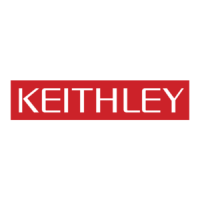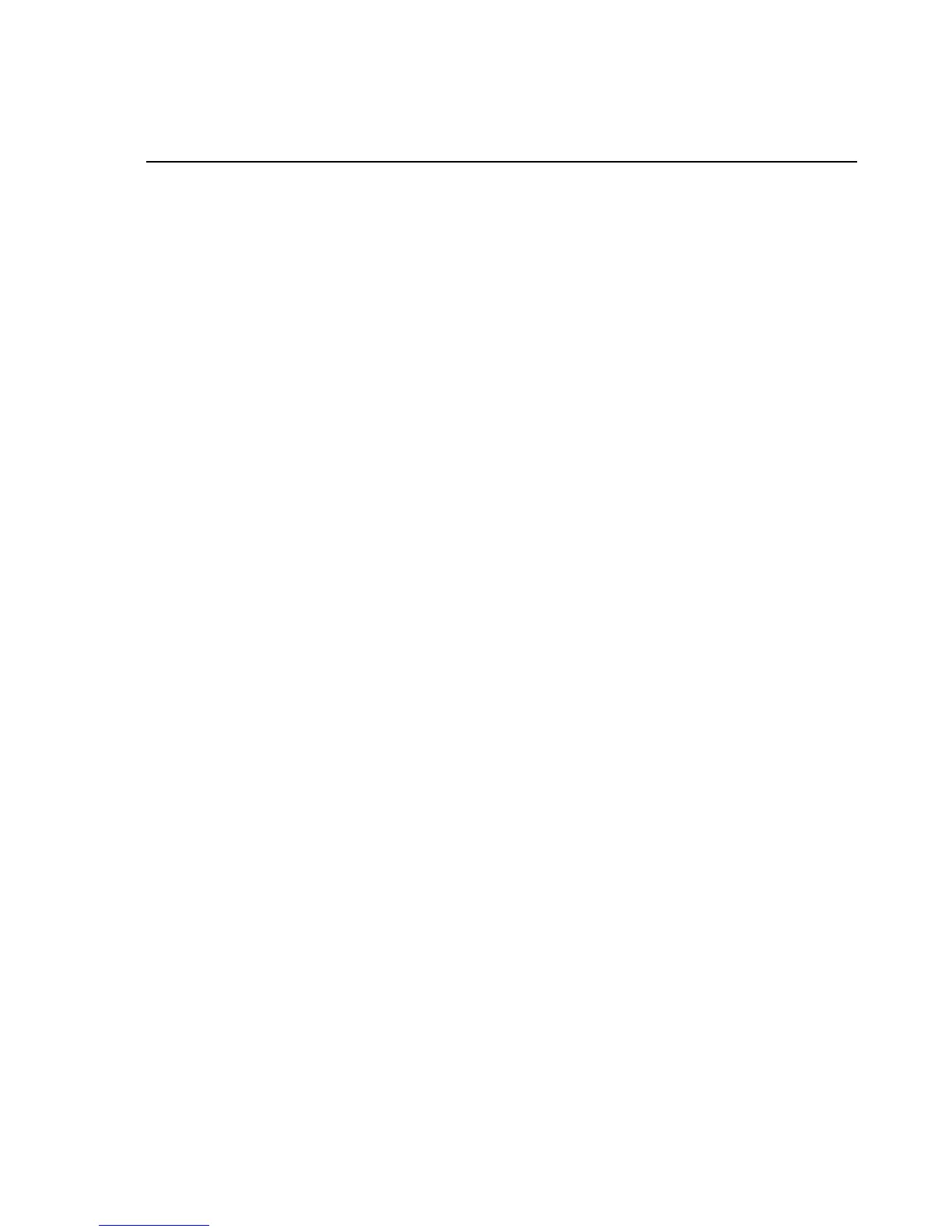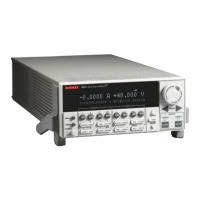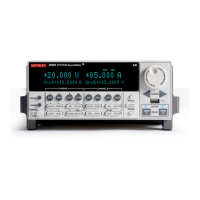3-9
SECTION 3
Bipolar Transistor Tests
To store the program in non-volatile memory, see the “TSP
Programming Fundamentals” section of the Series 2600 Refer-
ence Manual.
Once the code has been placed in the instrument run-time 8.
memory, we can run it at any time simply by calling the func-
tion ‘DC_Gain_Search_Fast()’. This can be done by typing
the text ‘
DC _ Gain _ Search _ Fast()
’ after the active
prompt in the Instrument Console line of TSB.
In the program ‘9. DC_Gain_Search_Fast.tsp’, the function
DC _ Gain _ Search _ Fast(vcesource, istart,
istop, isteps)
is created.
vcesource
• represents the voltage value on the
collector-emitter of the transistor
istart
• represents the start value for the base current
sweep
istop
• represents the stop value for the base current
sweep
isteps
• represents the number of steps in the base
current sweep
If these values are left blank, the function will use the default
values given to the variables, but you can specify each vari-
able value by simply sending a number that is in-range in
the function call. As an example, if you wanted to have the
collector-emitter voltage (V
CE
) be 2.5V, the base current sweep
start value at 10nA, the base current sweep stop value at
100nA, and the number of steps to be 10, you would send
DC _ Gain _ Search _ Fast(2.5,10E-9, 100E-9,
10)
to the instrument.
The sources will be enabled, and the collector current of the 10.
device will be measured.
Once the sweep has been completed, the data (I11.
B
, I
C
, and ß)
will be presented in the Instrument Console window of TSB.
Note that the program reverses the polarity of the emitter cur-
rents in order to display true polarity.
3.5.10 Program 6B Description
Initially, both units are returned to default conditions. SMUB,
which sources V
CE
and measures I
B
, is set up as follows:
Source V•
1mA compliance, autorange measure•
Remote sense•
vcesource
• : –10V
SMUA, which sources I
E
, is configured as follows:
Source I•
Local sense•
11V compliance, autorange•
istart
• : –1mA
istop
• : –10mA
isteps
• : 10
10ms delay•
Staircase sweep mode•
Both SMU outputs are then zeroed and enabled. Next, SMUB
sources V
CE
and SMUA begins the current sweep on the emitter
current (I
E
) from istart to istop in isteps. At each point in the
sweep, SMUB measures the base current (I
B
). Upon completion of
the sweep, the current gain (ß) is calculated and the data (I
B
, I
C
,
and ß ) is printed to the Instrument Console of the TSB.
3.5.11 Example Program 7:
AC Current Gain
NOTE
For the sake of simplicity, this program does not include
the iterative search algorithm included in Program 6A.
To test at a specific IC value, first use Program 6A to
determine the base current at that target value, and
enter I
B
values slightly higher and lower when prompted
to do so in Program 7.
With the power off, connect a dual-channel System Source-1.
Meter instrument to the computer’s IEEE-488 interface.
Connect the test fixture to both units using appropriate 2.
cables.
Turn on the instrument and allow the unit to warm up for two 3.
hours for rated accuracy.
Turn on the computer and start Test Script Builder (TSB). Once 4.
the program has started, open a session by connecting to the
instrument. For details on how to use TSB, see the Series 2600
Reference Manual.
You can simply copy and paste the code from Appendix A in 5.
this guide into the TSB script editing window (Program 7),
manually enter the code from the appendix, or import the TSP
file ‘AC_Gain_.tsp’ after downloading it to your PC.
If your computer is currently connected to the Internet, you
can click on this link to begin downloading: http://www.
keithley.com/data?asset=50931.
Install a small-signal NPN silicon transistor such as a 2N5089 6.
in the appropriate transistor socket of the test fixture.
Now, we must send the code to the instrument. The simplest 7.
method is to right-click in the open script window of TSB,
and select ‘Run as TSP file’. This will compile the code and
place it in the volatile run-time memory of the instrument.

